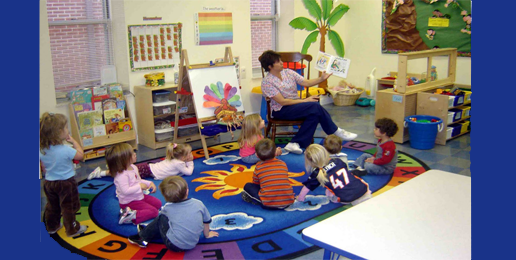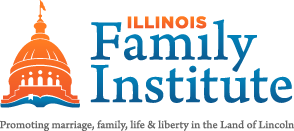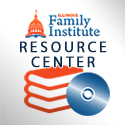
“Education is simply the soul of a society
as it passes from one generation to another.”
~G.K. Chesterton
In her article “Trans-Friendly Preschool” that appeared in the Journal of Gay & Lesbian Issues in Education, Laurel Dykstra advocates ideas and recommends activities that can only be described as ignorant, radical, subversive, cruel, and pernicious. No civil society, let alone those who claim to be followers of Christ, would countenance such evil being perpetrated on our most innocent. The ideas articulated by Dykstra constitute not education, but unconscionable educational malpractice.
Virtually every cultural institution-from our churches to our courts to our legislatures to our news media to our entertainment industry to our government schools–has been commandeered by homosexuals and those who support their destructive cultural agenda. Those who hold traditional Judeo-Christian values must boldly and tenaciously oppose through word and deed efforts to normalize homosexuality–especially in government schools that our taxes subsidize.
If those who hold traditional beliefs on the nature and morality of homosexual conduct do not take action now, this is what we will see in our pre-schools in the not too distant, calamitous future:
Trans-Friendly Preschool
Laurel A. Dykstra
Children from trans families have one or more parents, siblings or other family member who is trans; these children may have a trans identity or may identify with their assigned genders. Trans kids and kids from trans families attend preschool and kindergarten, and they need educational settings that reflect and affirm their lived experience.
So what might a trans-positive preschool or kindergarten look like? What follows are some suggestions and ideas based on my experiences as a parent, conversations with friends, and some web surfing.
. . .
The binary gender system is hierarchical, with males and their gender-sanctioned activities considered superior, and females and their gender-sanctioned activities inferior. This system is harmful to everyone.
All gender expressions are valid. As most cultures are misogynist, it is important to be aware of our misogyny and not value male gender-sanctioned activities over female ones. In asserting that “girls can do anything boys can do,” we must not undervalue either the girls or the boys who participate in so-called “female” activities, like playing with dolls or dress-up.
Trans kids and trans families at school are an asset to the class, not a problem to be solved. But because North American popular culture is transphobic, these kids and families require extra support and have safety and privacy issues that need to be respected. It is not enough for classrooms, teachers, and schools to be “open” or “non-judgmental”; they need to be actively trans-positive.
Trans-positive education must be integrated into a larger anti-oppression model of teaching that is anti-racist, feminist, crip-positive, etc. A specific focus on trans issues will be a relatively small but important part of the classroom experience.
It is important to talk about difference and address kids’ questions. Clear, open, and respectful communication is critical to trans-positive education.
COMMUNICATION WITH KIDS
“Some” and “most” are the words I try to use when talking to my kids about gender. “Well, most men have penises, but some don’t.”
“Some girls grow up to be men.” “Most men don’t have breasts.”
Adults should believe kids, follow their leads, and respect their limits, but also set the tone. “Those aren’t boy shoes, those are Gina’s shoes.” Affirm kids’ experiences, but do not make a big deal. “Oh, my friend Jen is a mama with a beard too.”
Encourage kids to question their assumptions. “How do you know that that person is a woman? Could a man wear a dress?”
Point out gender benders. “I like that woman’s hard hat.”
…
Make the classroom a place where questions are allowed. It may also be important to talk about manners and cultural norms if questions clearly are not allowed outside the classroom.A teacher might say, “It is always ok to ask questions about gender in our class but at home or on the bus some people might be embarrassed. Whose family talks about gender? Whose doesn’t? Different families are different. What could you say to someone if you asked a question and they felt embarrassed?”
Encourage exploration of feelings. “What do you like about the princess dress?” Call children by the name and the pronouns they choose, if at all possible.
Emphasize the goodness of each child.
COMMUNICATION WITH ADULTS
It is important for teachers to be advocates for trans kids and kids from trans families. If the school, administrators, and families are receptive, this is relatively easy. A teacher can refer parents to resources, share information with next year’s teacher, ease the child’s transition from one class or school to another, and exchange ideas and strategies with other teachers and administrators. Teachers and parents can work together to influence school policies, such as adding the word transgender to the school’s diversity/anti-oppression statement or designating universally accessible bathrooms. In a situation where family members, administrators, other students’ parents, or a particular teacher are transphobic, a child of kindergarten or preschool age is vulnerable. To be an advocate for a child in this instance, a teacher must be careful not to make the child a focus of negative attention, not to alienate a hostile parent, and not to increase a child’s isolation by triggering removal from the class.
The simplest kind of advocacy is being clear to students, family members, and other adults that you like, respect, and accept the child. Some adults feel threatened by people who cross gender lines. A teacher who listens to other adults, parents, and educators, and who directs them to resources can foster a greater understanding of gender issues and help create a more trans-positive atmosphere.
PRACTICAL CLASSROOM SUGGESTIONS
Most programs will not have the budget for new equipment, and currently there are not many trans-friendly products at the teacher store. For example, Girls Will Be Boys Will Be Girls Will Be . . . (Bunnell & Reinheimer, 2004) is a gender coloring book that is useful and fun, but the language is pretty sophisticated for those under six. Most of my suggestions, therefore, involve modifying equipment or activities that are already part of the classroom. Some suggestions will only be practical in a progressive classroom setting.
- Color Days. To teach colors, have students dress in the “color of the day.” Do not skip pink and purple. Assume that all kids will participate, and have extra pink things in a basket at the door, including pink ties, vests, and hard hats. Kids who do not want to wear pink might be happy to share pink snacks or a pink drink.
- Tranny Teddy.Have a non-gendered toy/doll/puppet that is part of circle time. Do not use pronouns and give this creature a variety of gendered clothing, such as a skirt and tie. If asked, say “Oh, Binker isn’t a boy or a girl.”
- Stereotype Game. Teach kids what a stereotype is (e.g., monsters are scary, boys are noisy, girls like dolls, grown-ups do not cry) and help them to spot stereotypes in their play, in your teaching, in books, and in advertisements. This is useful for all kinds of anti-oppression education.
- Picture Day. This was always traumatic for me. Try involving parents in a photo day that is about the kids choosing to wear what makes them feel good. Be aware that there are many issues here. Who sees the photographs? Who pays for them? Is it a fundraiser?
- Butch/Femme Day. Why not teach kids language like butch/femme, as an alternative to boy/girl or male/female? You could have dress-up days to play deliberately with gender, like “Fabulous and Fearless Day” or “Capable and Campy.”
- Dress-Up Box. Make sure that it is well stocked. Move it around so that it is near the trucks one week and by the paints another time. Have a photo collage on the inside lid or around the mirror that features fire fighters, dancers, princesses, and pirates of various genders, but also include drag queens and kings, bearded ladies, and other obviously trans people.
- Bathrooms. This is a critical safety issue for some kids and a source of extreme agitation and stress for others. Trans kids need to have the option of using a bathroom that is not designated for girls or boys and to have this be available with a minimum of fuss. All kids need access to a bathroom at school that feels safe and comfortable to them.
- Non-Traditional Colors. Can you find or paint pink, purple, and pastel-colored construction blocks and trucks? What about flowered hard hats and sparkly tools?
- Special Guests. Invite a diverse cross section of people to the classroom, including people in “non-traditional” jobs, such as a woman electrician or a male ballet dancer. Invite a drag performer or transsexual person who would be willing to share their story and a photo album. Try to involve students’ family members.
- Story Time. Choose books carefully. There are many more books with fierce, brave girl characters than with gentle, creative boys. A few suggestions are: Amazing Grace by Mary Hoffman, Prince Cinders (Cole, 2004); The Story of Ferdinand (Leaf, 2004); The Paper Bag Princess (Munsch, 1980); and Oliver Button Is a Sissy (dePaola, 1979). When reading, try switching pronouns, avoiding them altogether, or using alternative pronouns.Ask kids to spot stereotypes in books, especially fairy tales.
CONCLUSION
This essay is addressed mainly to teachers, but it applies to parents, administrators, and home-school groups as well. These ideas are meant to be used by parents advocating for their family or child, by teachers educating parents, administrators, and other teachers, and by administrators developing school policies. For “stealth practitioners” (i.e., teachers in a transphobic setting), these classroom suggestions can be implemented without fanfare to create a more just and welcoming classroom. With the current blossoming of transgender life, more and more of us are concerned that children not be educated in an environment that harms or maligns transgender individuals, whether those individuals are students, family members, or part of the greater community. My basic desire for my kids and all kids is that, if they turn out to be some gender we have not even heard of yet — or if they grow up perfectly happy with the cultural gender norm-they will know that they are good just as they are, they will realize that they have made a choice, and they can admire and respect the gender choices of others.
If ever there was a time for weeping, it is now. If ever there was a time for righteous indignation, it is now. If ever there was a time for uncompromising courage, it is now.






























